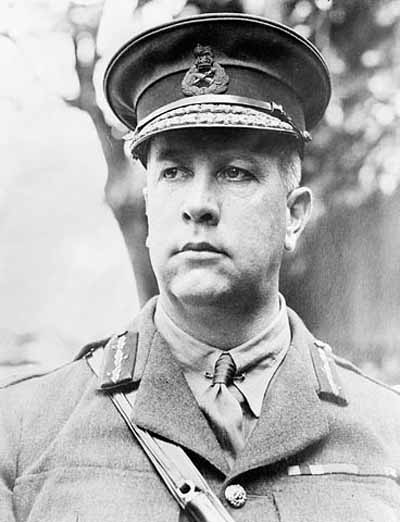Currie, Sir Arthur William National Historic Person
London, Ontario

General Currie, 1917
© Canada. Dept. of National Defence | Ministère de la Défense nationale / Library and Archives Canada | Bibliothèque et Archives Canada / PA-001370
Address :
399 Ridout Street North, London, Ontario
Recognition Statute:
Historic Sites and Monuments Act (R.S.C., 1985, c. H-4)
Designation Date:
1934-05-28
Life Date:
1875 to 1933
Other Name(s):
-
Currie, Sir Arthur William
(Designation Name)
Importance:
Commander of the Canadian Corps, first General in the Canadian Army; World War I
Plaque(s)
Additional plaque: 603 Fort Rodd Hill Road, Victoria, British Columbia
Trained with the militia here at Fort Rodd Hill, Currie went on to become a pivotal figure in Canada’s war effort during the First World War. Upon the outbreak of war, he took command of one of the first infantry brigades formed by Canada for overseas service. This skilful leader was promoted to Lieutenant-General after the victory at Vimy Ridge and became the commander of the entire Canadian Corps, the first and only Canadian to rise to this position. After the war, he served as Principal and Vice-Chancellor of McGill University. Criticized in his time, today Currie is seen as one of the finest generals of the Great War.
Existing plaque: 399 Ridout Street North, London, Ontario
Born at Napperton, Currie served in the Canadian Garrison Artillery (1897-1914), rising to command his regiment in 1909. In 1914, he led the 2nd Brigade of the 50th Regiment Gordon Highlanders overseas and after successive promotions became Major-General in command of the First Canadian Division. After Vimy Ridge he was promoted Lieutenant-General and commanded the Canadian Corps until the end of the war. On returning to Canada he became the first General in the Canadian Army. From 1920 until his death he served as Principal and Vice-Chancellor of McGill University. He died at Montreal.